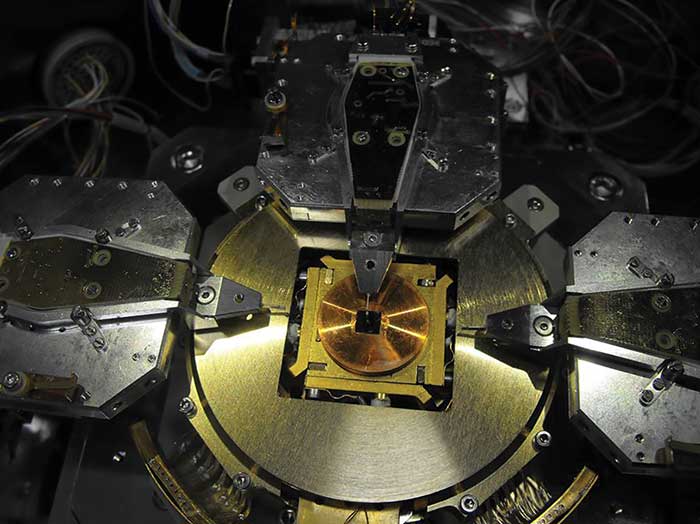As nanotechnology moves into commercial production, the tools used to test and measure at the nanoscale become increasingly important — and increasingly optical.
 Materials at the nanoscale can behave in surprising ways. While the properties of macro materials can often be predicted, the behaviors of a material invisible to the naked eye can differ greatly. Providing insight into this nanospace is essential for maximizing its commercial success.
The extremely high spatial resolution characterization capabilities of today’s nanomeasurement and test tools reveal vital information about correlations between structure and property. Only by studying, designing and modifying these nanostructures can we achieve the desired properties and performance from nanomaterials and devices.
“Any industries that design, manufacture or use nanomaterials and devices would be the beneficiaries,” said Anil Ghimire, applications scientist at Keysight Technologies Inc. in Santa Clara, Calif. “Examples include: semiconductors, MEMS, nano/microcomponents and devices, and energy (solar, battery, oil/gas). As the size, density, efficiency and performance requirements for such components and devices become more demanding, the benefits of nanomeasurement tools increase.”
In the semiconductor industry, device feature sizes are already at 14 nm and are rapidly approaching 10 nm. To analyze devices at this level requires 3D metrology, as well as electrical and thermal imaging.
Beyond semiconductors is the need in biology to know at the nanolevel the structure and chemical composition of a biological material. With research into using nanoparticles as drug-delivery vehicles and for medical diagnostics, nanotechnology test and measurement processes and equipment are increasingly important.
Tiny 2D materials make big impact
There’s quite a stir about some tiny 2D materials that are just one to a few atomic layers. Materials such as graphene are expected to make a huge impact on the world. This miniscule material is thought to have huge potential in industrial applications, including next-generation electronics, bendable displays and wearable technologies, thanks to its extraordinary electrical and optical properties. In addition to being the thinnest material possible, it is transparent, ultralightweight and can act as a perfect barrier and superb conductor.
Materials at the nanoscale can behave in surprising ways. While the properties of macro materials can often be predicted, the behaviors of a material invisible to the naked eye can differ greatly. Providing insight into this nanospace is essential for maximizing its commercial success.
The extremely high spatial resolution characterization capabilities of today’s nanomeasurement and test tools reveal vital information about correlations between structure and property. Only by studying, designing and modifying these nanostructures can we achieve the desired properties and performance from nanomaterials and devices.
“Any industries that design, manufacture or use nanomaterials and devices would be the beneficiaries,” said Anil Ghimire, applications scientist at Keysight Technologies Inc. in Santa Clara, Calif. “Examples include: semiconductors, MEMS, nano/microcomponents and devices, and energy (solar, battery, oil/gas). As the size, density, efficiency and performance requirements for such components and devices become more demanding, the benefits of nanomeasurement tools increase.”
In the semiconductor industry, device feature sizes are already at 14 nm and are rapidly approaching 10 nm. To analyze devices at this level requires 3D metrology, as well as electrical and thermal imaging.
Beyond semiconductors is the need in biology to know at the nanolevel the structure and chemical composition of a biological material. With research into using nanoparticles as drug-delivery vehicles and for medical diagnostics, nanotechnology test and measurement processes and equipment are increasingly important.
Tiny 2D materials make big impact
There’s quite a stir about some tiny 2D materials that are just one to a few atomic layers. Materials such as graphene are expected to make a huge impact on the world. This miniscule material is thought to have huge potential in industrial applications, including next-generation electronics, bendable displays and wearable technologies, thanks to its extraordinary electrical and optical properties. In addition to being the thinnest material possible, it is transparent, ultralightweight and can act as a perfect barrier and superb conductor.
Member Exclusive: To read the complete article, please Login or Register